#cephalopods facts
Text
Idk about y’all but valentines memes have been my favorite part of the holiday since I was an inappropriately young child on the internet
So I made some cephalopod themed ones for your enjoyment <3

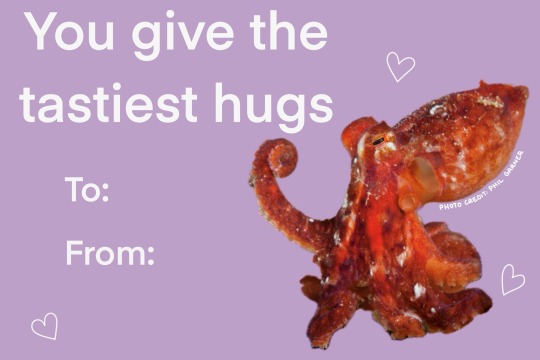




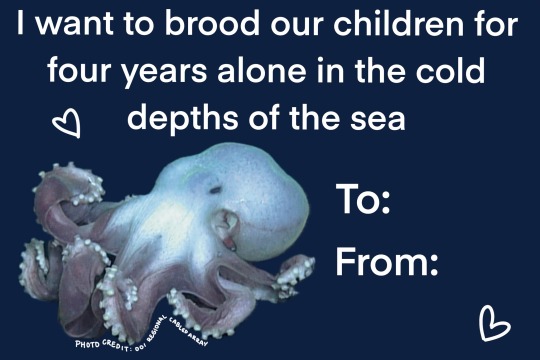



These puns are ones that did not make the cut for our actual Valentine’s Day cards shown in the last image
Purchase them at squidfacts.bigcartel.com <3
#cephalopods facts#cephalopod#cephalopods#squid#octopus#cuttlefish#nautilus#marine animals#marine biology#ocean animals#oceancore#ocean memes#marine memes#marine biology memes#valentines day#valentines cards#deep sea#marine biology shitpost
467 notes
·
View notes
Text
I'm a squid biologist on a mission
To bring squid facts to you. To your friends. To your neighbors. To some random dude named Brad who you've never met.
How? The Squid Facts Project. It's a street art campaign and hotline that texts folks squid facts!

Only snag in this hair-brained plan is that texting people is kiiinda expensive. So! I teamed up with Philly artist Corey Danks to sell shirts to keep the hotline running. Every one of those shirt dollars helps deliver squid facts to people.
Like, over 70,000 people over the last year!!! Isn't that wild?

So anyway. Get a shirt. They're cool, *and* they keep people learning about squid. It's a beautiful thing.
Also, the backs have the squid facts hotline on them so by wearing these you're helping people learn about squid too.
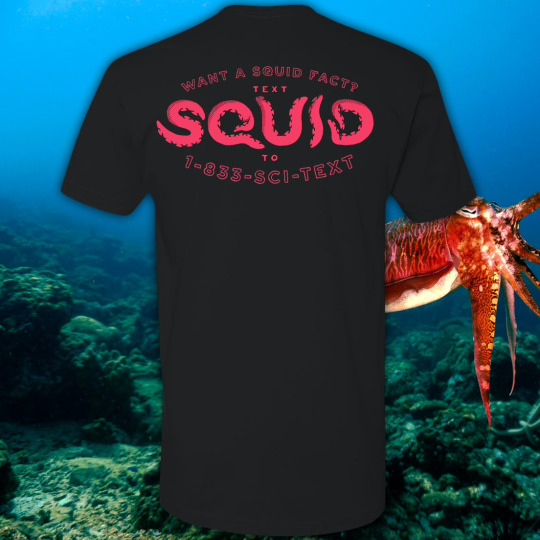
If you can't buy one, give us a reblog. I run a small science education nonprofit called Skype a Scientist, we're scrappy but trying so hard!!
#Squidtember#Squid#Cephalopods#science#marine biology#cephalopod#scicomm#sealife#marine life#squid facts#A lovely outfit for you#educational outfits?
8K notes
·
View notes
Text

Cephalopod lovers, meet the stubby bobtail (Rossia pacifica)! With a mantle length of only up to 2 in (5 cm), this tiny critter typically spends its days buried beneath the sand, emerging at night to feed. Shrimp comprise nearly 80% of this species’ diet, but it also preys on small fishes and even other cephalopods. It can be found in coastal waters from Japan to California.
Photo: kcram, CC BY-NC 4.0, iNaturalist
#science#nature#natural history#animals#cephalopods#stubby#ocean life#marine biology#did you know#fact of the day#cool animals#fish#squid
1K notes
·
View notes
Note
can you do one about vampire squids ? 🦑

Vampyroteuthis infernalis or Vampire Squid
It's (very dramatic) scientific name means "vampire squid from hell". However, the vampire squid is not actually a squid! It's actually the only animal in the Vampyroteuthidae family! It's separated into its own family because it can't change color or produce ink. Instead, it turns itself "inside out" (as shown above) to deter predators.
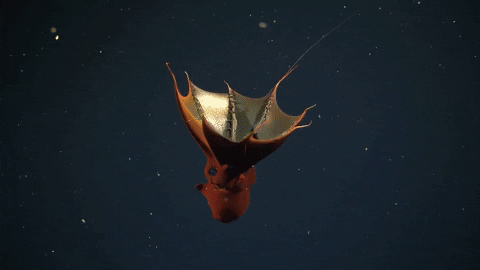
Proportionally, vampire squids also have the largest eyes compared to their body size! They eat mostly zooplankton, marine snow, and other organisms waste. They grow to be about the size of a football and live to be around 8 years old.

There's even evidence that vampire squids have been around since the Jurassic period- almost 200 million years ago!
#marine biology#marine ecology#animals#science#biology#animal facts#wildlife#marine life#ocean#fun facts#vampire squid#cephalopods#sea creature#squid#sea animals#sea creatures#sea animal#cool animals#zoology#ichthyology#sea#seas#oceans#the ocean#deep sea#jurassic period#fun animal facts#weird animal facts
1K notes
·
View notes
Text
🐙 Daily Cephalopod Fact: 🐙
Flamboyant Cuttlefish: Cuttlefish have a specialized, hollow feature called a cuttlebone that helps the animal maintain buoyancy by adjusting the levels of gas and liquid in its chambers.1 Because the flamboyant cuttlefish’s cuttlebone is relatively small, this species can only float and swim for short amounts of time. Instead of swimming, flamboyant cuttlefish “walk” along the ocean floor using their arms. They also have a highly developed sensory system that helps them respond and adjust to their surroundings.

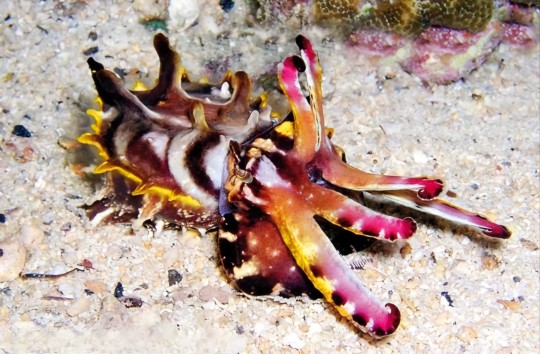
#flamboyant cuttlefish#flamboyant#cuttlefish#cephalopod#daily cephalopod#cephalopod facts#facts about cephalopods#daily cephalopod fact#respect the locals#shark blog#ocean#ocean life#marine#marine animals#marine biology#marine life
420 notes
·
View notes
Text
If you asked me as a kid what my favorite animal was, there's a good chance I'd respond "chambered nautilus", though I probably would mispronounce it. I don't know if it's still my favorite but it's definitely up there in the pantheon of weird critters. For this Wet Beast Wednesday, I'll discuss my childhood favorite.
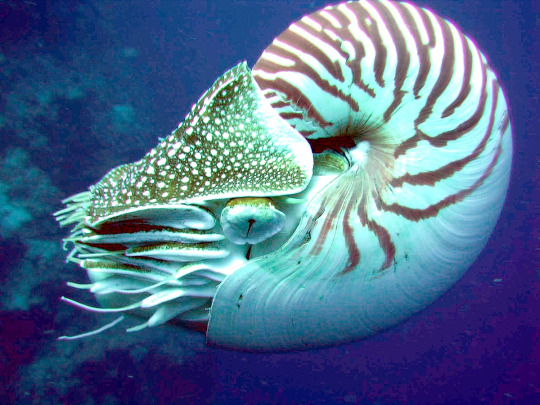
(image: a nautilus)
The nautilus is a cephalopod that lives in a curved shell and looks similar to (but is not closely related to) the extinct ammonites. There are 6 living species in two genera, but 90% of the time when someone is discussing nautiluses they are referring to the most well-known species: Nautilus pompilius or the chambered nautilus. Nautiloids are ancient, going back to at least the late triassic with their more primitive ancestors going back as far as the ordovician period, a time when only invertebrates and primitive plants occupied the land and true fish had not yet appeared. Because of their ancient history, nautiluses are sometimes considered living fossils. I have ranted before on how misleading the term "living fossil" is so I'll spare you that for now. Nautiloids are considered a sister group to the celoids, which contains all the squid, octopus, cuttlefish, and everything else we thinks of as cephalopods. Nautiluses should not be confused with paper nautiluses. Also called argonauts, paper nautiluses are a group of octopi that make an egg case which looks like a shell.

(image: a nautilus)
The most noticeable feature of a nautilus is its shell. The shell is smooth and finely curving, naturally growing in the shape of a logarithmic spiral (though not, as is commonly stated, a golden ratio spiral). The shell has a stripy outer layer and an inner layer coated with nacre. Internally, the shell is divided into camarae (chambers) separated from each other by walls called septa. Each septum has a small hole in it through which a strand of tissue called the siphuncle passes. Most of the nautilus's body is in the foremost and largest chamber. The shell grows new septa as the animal grows, with the nautilus's body moving to a new chamber as it becomes too large for previous ones. Juveniles are typically born with 4 septa, with adults having as many as 30. In addition to providing protection from predators, the shell is also key for regulating buoyancy. The septa can contain pressurized gas or water and the siphuncle regulates their contents by either adding or removing water to increase or decrease buoyancy. Because of its pressurized contents, the shell can only withstand pressure at depths up to 800 M (2,400 ft) before imploding. Oddly enough, nautiluses can be safely brought up from deep waters where most animals would be killed by the pressure changes. To move, the nautilus pulls water into the first chamber of the shell using its hyponome (siphon) and shoots it back out. The chambered nautilus is the largest species, with a maximum shell diameter of 25 cm (10 in), though most get no larger than 20 cm (8 in).
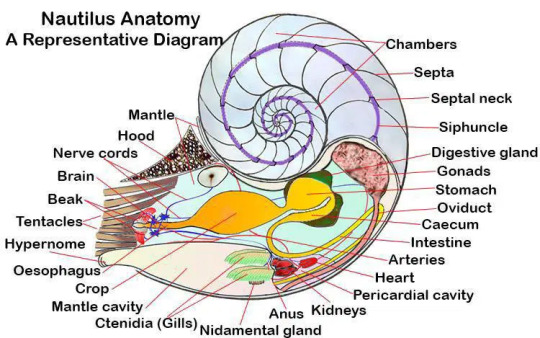
(image: a diagram of nautilus anatomy. source)
Where celoid cephalopods have tentacles, nautiluses instead have numerous cirri. Unlike tentacles, cirri are less muscular, are not elastic, and have no suckers. They are used to grab objects using their ridged surfaces and can hold in so hard that trying to take an object away from a nautilus can rip off its cirri, which will remain firmly attached. In addition, the nautilus has modified cirri that serve as olfactory receptors and a pair that serve to open and close the shell when the nautilus needs to retract into it or emerge. Nestled within the cirri is the beak, which is used to consume the nautilus's primary prey of invertebrates, though they have also been seen scavenging fish. Their eyes are less developed than most cephalopods, lacking a lens and consisting of a small pinhole that only allows the nautilus to see simple imagery. Their brains are differently structured than most cephalopods and studies have found them to have considerably shorter long-term memories.
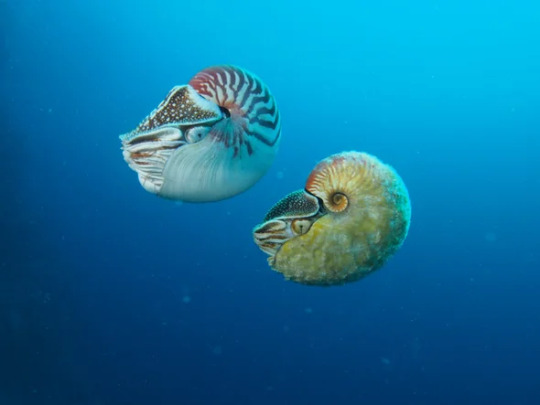
(image: a chambered nautilus (upper left) next to a rare Allonautilus scrobiculatus. source)
Cephalopod reproduction is quite different than that of other cephalopods. While most cephalopods are short-lived and semelparous (reproducing only once), nautiluses can live over 20 years and reproduce multiple times (iteroparity). They do not reach sexual maturity until around 15 years old, with females laying eggs once per year. Eggs are attached to rocks and take 8 to 12 months to hatch. Males have a structure called the spadix composed of 4 fused cirri that they use to transfer sperm to females. Females lose their gonads after laying their eggs and will regenerate them for the next year's mating season. Interestingly, male nautiluses seem to vastly outnumber the females. EDIT: @bri-the-nautilus in the replies found an alternate explanation for the disparity in male and female numbers you should check out. TLDR; the females are asocial.
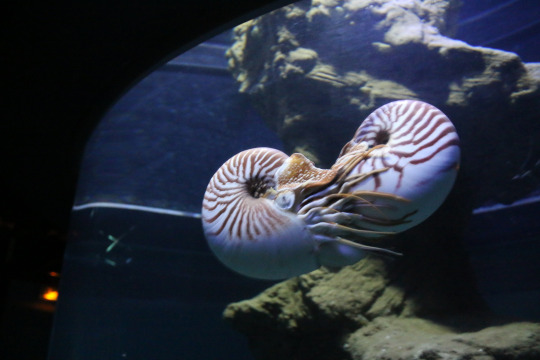
(image: nautiluses mating)
Nautiluses are found in the Indo-Pacific reagion of the ocean and can be found on the steep slopes of coral reefs. They prefer to inhabit waters several hundred meters down. It was once believed that they would rise to shallow waters at night to feed, lay eggs, and mate, but their vertical migration behavior has since been shown to be more complex than that. They have noon been fished by humans for their shells, which have become popular subjects in art and can be made into a number of decorative pieces. The nacre of the shell can be polished into osmeña pearl, which can be quite valuable. Demand for the shells combined with the late sexual maturity and low fecundity is threatening all the species. As of 2016, nautiluses have been added to the CITES Appendix II, making them protected by limiting international trade of their shells. Despite this, they are still threatened and require further protection

(image: a carved and painted nautilus shell from the Poldi Pezzoli Museum, Milan)
#wet beast wednesday#nautilus#chambered nautilus#cephalopod#marine biology#zoology#biology#ecology#animal facts
1K notes
·
View notes
Text
Uncharismatic Fact of the Day
Not all eyes are created equal-- in the case of the cock-eyed squid, they couldn't be more different! Members of the genus Histioteuthis are born with two eyes of the same size, but as they get older the left eye grows much faster than the right; by the time they're adults, the left eye can be twice as large as the right! The larger eye faces up towards the surface and detects prey swimming overhead, while the smaller eye can detect bioluminescence from below.
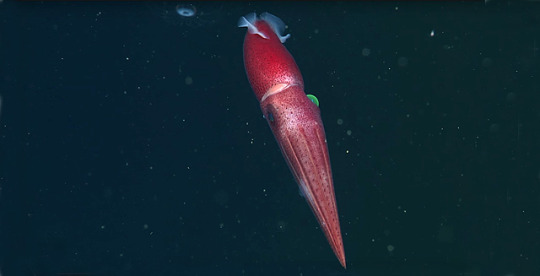
(Image: A cock-eyed squid (Histioteuthis heteropsis) by MBARI)
#cock-eyed squid#Oegopsida#Histioteuthidae#squid#cephalopods#mollusks#invertebrates#uncharismatic facts
365 notes
·
View notes
Text

Convergent evolution is the evolution of 'analogous' or similar structures in organisms that are not closely related. Such as the wings of insects, birds and bats.
One potential example of this is the Diplomoceras maximum, an extinct squid-like creature who is clearly analogous to, or a distant cousin of Clippy the paperclip.
This amazing creature lived 68 million years ago, with the most notable fossil found at the cephalopod rich López de Bertodano Formation of Seymour Island, Antarctica. An area that was formerly warmer before further movement of tectonic plates.
The fossil shell measured an impressive 1.5 metres and is formed from ridges, speculated to grow a section annually. These ribs are thought be similar to tree rings, being used for dating samples and gaining insight about the environment of the prehistoric sea, such as measuring the carbon and oxygen isotopes in the shell.
Paleoart by James McKay
#marine biology#marine life#marine animals#ocean animals#marine zoology#cephalopods#molluscs#paleontology#fossils#ocean#wet beast wednesday#marine ecosystem#marine#zoology#animal facts#animalia#animal#sea animals#sea creature#sea creatures#sea life#ocean life
201 notes
·
View notes
Text
vampire squid taxonomy
vampire squids are cephalopods in the family vampyroteuthis
they are the only extant species in this family, but there are 3 extinct genera in this family. (https://www.sciencedirect.com/science/article/pii/S1055790307001698)
despite the name, vampire squid are more closely related to octopi than squid, this is due to their 8 arms, placing them in the superorder Octopodiformes, instead of Decapodiformes (the squid and cuttlefish)
it was discovered in the late 1890s, and described later in 1903.
the feature that distinguishes the vampire squid from both octopi and squid, is two retractible filaments, which are separate from the arms, and this is why it is neither a true octopus, or a squid (Young, R. E. (1967). Homology of Retractile Filaments of Vampire Squid. Science, 156(3782), 1633–1634. http://www.jstor.org/stable/1721610)
#vampire squit#vampire squid#look at me doing actual fish facts again!#also if the papers are not available to be accessed try looking on libgen#marine biology#eddie in the ocean#taxonomy hell#cephalopods
169 notes
·
View notes
Note
Paper Nautilus? Those boys are lovely and I feel like they're SO underrated


Daily Cephalopod #6
These are Argonauts! (Also nicknamed The Paper Nautilus)
To spread some Argonaut love, here's some cool facts!
The females grow much larger than males (about 8 times larger) and they produce a thin eggcase, or their "shell"
Females can mate and reproduce multiple times in their life, while the males only mate once and die shortly after
The males mate by removing their hectocotyl arm, which is then stored in the females eggcase!
The hectocotylus is the modified tentacle on male cepholpods that is used for mating and it was first discovered on an argonaut! (although it was originally misidentified as a parasitic worm attached to the mantle of the female it was discovered on)
The nickname 'Paper Nautilus' is quite misleading, because Argonauts are actually octopuses!
Argonauts have often been observed floating with/on salps, jellyfish, plant debris, driftwood, and even other argonauts at all stages of life!
Argonauts do not reside near the sea floor, they tend to drift closer to the surface and are the only known pelagic octopus!
Like many other octopuses, they have ink, they can change color, and they have venom!
#so yeah!#theyre very cool boys#octopus#argonaut#the argonaut#or the paper nautilus#cephalopod#daily cephalopod#marine life#ocean creatures#ocean critters#marine creatures#marine animals#marine biology#marine facts#sea creatures#sea life#aquatic#aquatic animals#aquatic animal facts#cephalopods#cephalopod facts#octopus facts#ocean animals#ocean life#biology#zoology#animals#squid mail くコ:彡#GOOBERS!!!
254 notes
·
View notes
Text
Cepho fact #08
There are 2 main divisions of octopi; Cirrate octopus have 2 fins on their heads and have small hair like strands on their single row of suckers called cirri, Cirrate octopus also lack ink sacks and are deep sea dwelling.

You can see the fins on this dumbo octopus (Grimpoteuthis)
Incirrate octopus are the "stereotypical" octopus, they lack cirri on their suckers, and lack the fins on their head, but have ink sacks.
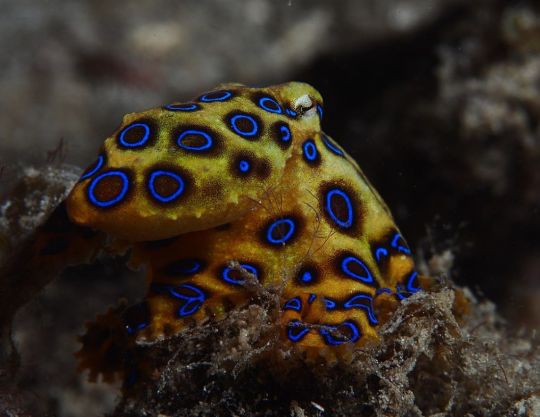
And you can see the lack of head fins on this Blue ringed octopus (Hapalochlaena)
150 notes
·
View notes
Text

The Bigfin Reef Squid, or Sepioteuthis lessoniana, otherwise known as the squid in animal crossing.
They’re widely distributed throughout the info-pacific. We know more about them than any other squid because they are so easy to observe! They live in shallow water, mate during the day, and eat more at night. Making them the perfect study species.
Plus they’re so angry and cute how can you not love them? Pulling up on a dozen of these cuties out in the wild is 100% a dream I’ve had since I was a child
#art#artist#illustration#scientific illustration#science art#science#squid#reef squid#cephalopod#cephalopods#teuthology#marine life#ocean#ocean animals#marine biology#cephalopods facts
59 notes
·
View notes
Text


Do you like Squid Facts?
🔲Yes
🔲No
This valentines day, we thought you might need a little help from cephalopods to celebrate. Get a pack of 20 cards for your classroom, your coworkers, your neighborhood, frankly anyone who needs both a valentine AND a little bit of science to boot.
Get 'em here: https://squidfacts.bigcartel.com/
Proceeds benefit science education nonprofit Skype a Scientist AND the graduate student who designed these cards who is studying octopuses (Meg Mindlin @invertebabe!). Meg is trying to afford to get to a cephalopod neuroscience conference later this year and these cards will help her get there 🫡

They, of course, come with the classic heart stickers, a range of shades of pink and purple included.
#Squid facts#valentines#put some science into your celebration#science communication#marine biology#ocean#marine life#octopus#flapjack octopus#blue ring octopus#cuttlefish#bobtail#bobtail squid#squid#cephalopods#sealife#scicomm#cephalopod#science
888 notes
·
View notes
Text
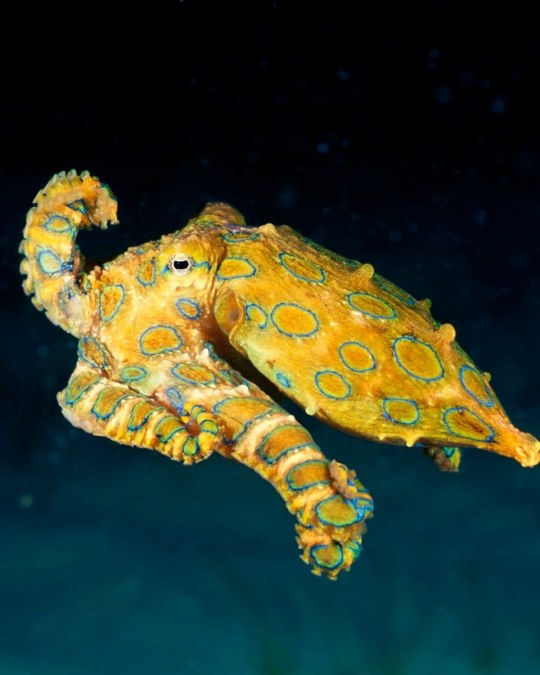
Did you know? Blue-ringed octopuses (members of the genus Hapalochlaena) are among the world’s deadliest cephalopods. Found in coral reefs in the Indian and Pacific oceans, these critters typically measure less than 8 in (20.3 cm) long. But, they pack a venomous bite that is potent enough to instantly paralyze, and even kill, a human being.
Photo: Angell Williams, CC BY 2.0, flickr
#science#nature#natural history#animals#fact of the day#did you know#octopus#blue ringed octopus#ocean life#marine biology#coral reef#cephalopods
717 notes
·
View notes
Text

When a squid learns to write, that’s calamarigraphy!
But seariously folks! The word “Calamari'' derives from the Greek “kalamos” for “pen” and the Latin “calamarium” for “pen case”—referencing the translucent, tapered internal shell and ink sac you’ll find in species like our local california market squid Doryteuthis (formerly Loligo)!
This pen+ink sac combo can be used for writing, if only during an invertebrate zoology lab session—though if a squid used it to sign a check, it’d be proof that they have the quills to pay the bills!
2K notes
·
View notes
Text
🐙 Daily Cephalopod Fact: 🐙
Giant Cuttlefish: The giant cuttlefish, also known as the Australian giant cuttlefish, is the world's largest cuttlefish species, growing to 20 inches in mantle length and up to 39 inches in total length. They can be over 23 lbs in weight.
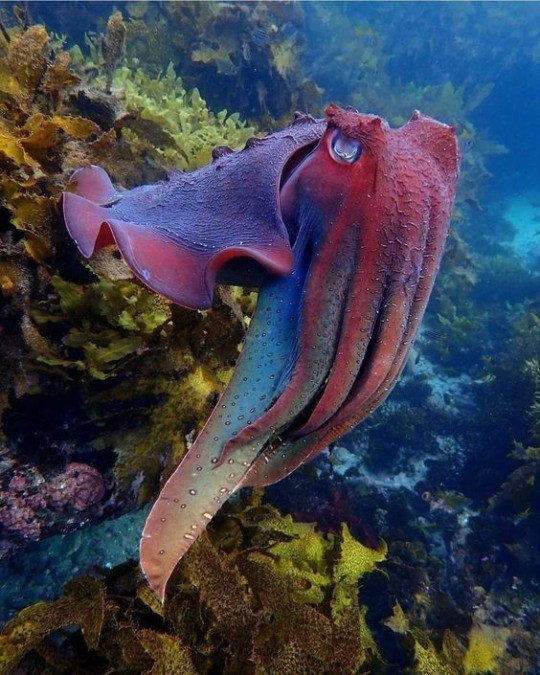

#australian giant cuttlefish#giant cuttlefish#cuttlefish#cephalopod#daily cephalopod#daily cephalopod fact#cephalopod facts#facts about cephalopods#shark blog#respect the locals#marine animals#marine#marine biology#marine life#ocean animal#ocean#australia
160 notes
·
View notes